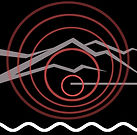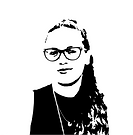Eilat is a city without a defined urban identity, except being a tourist haven.
The streets are streets only by definition and not by experience, the public-space is not defined and is not suitable for desert-climate.
Due to the lack of planning adapted to a desert climate, the municipal foreign life hardly exists in the city.
Eilat is actually quite a small town and you can get around by foot, but in fact, the most common way of getting around is by taxi.
In addition, the city does not transcribe as a desert city, but only as a sea-city.
I chose to analyze the main street of the city - Palm Avenue, which begins in the desert-mountains and ends by the entrance to the city and the Red Sea shore.
This street contains the majority of the public and commercial areas of the city, the university, cultural and leisure centers.
Even though it should be functioning as a lively street due to all of the above, it is not. Most hours of the day – the street is empty, and there is no sun-protection provided within its architecture.
What is the deep meaning of a life in the desert? What is the break from the desert?
In response to these questions, I chose the concept of an oasis. Oasis is a break from the desert, a place that is a place of relaxation, providing shelter from the climatic conditions, offering a resting point, water and food. A perfect haven.
As planning and designing goals, I chose to focus on the beginning of the street, University Square. This segment of the street is the beginning and the end, entry and exit, a monumental end, a meeting between the desert and the urban street.
This section incorporates all the functions available on the street today, commerce, academy and education, community, residential and tourism.
My project offers a creation of a new urban space, productive and functioning city, an urban desert, which responds to its location.
Eilat
a city oasis










